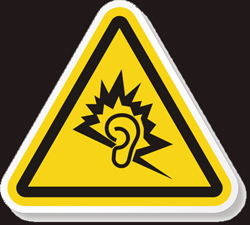“We need to turn down the sound.” Do those words strike fear, anger, frustration, artistic disruption, etc., within you and your team?
If so, it’s take a long hard look in the mirror and ask, “Why are we doing this?”
If instead you’re thinking, “Hmm… this could be an opportunity to make use of our skills and solve an irritating problem,” then you know where this post is going to go.
As a church sound person, I know having worship music at high levels can be good for the congregation, especially those congregations where they don’t know how to move around and haven’t felt the powerful impact of a worship song that’s allowed to fully breathe and exult God’s presence.
I’ve been a part of the magical mystery that happens at a large event where with the last thunderous chorus the music comes way, way down and you feel the mist of the Holy Spirit washing over the crowd and something happens to people.
But I get it—not everyone wants to hear that sonic energy all the time. So do I impose my style onto the congregation or do I find a way to make softer levels sound as good as possible, regardless of my personal opinion? If we’re doing this for the right reasons, the answer is clear.
Some background is appropriate. Our church is a “gymnatorium” in its current phase of life. A big, square, very reverberant, non-treated environment. Hard surfaces everywhere, including the floors and ceiling. We have an electric guitar-driven worship team with live drums in a shield without a lid. Even the stage, which is about 4 feet off the ground, doesn’t have carpeting.
Needless to say, it’s a bit of a challenge to get decent sound and intelligibility out of the system, which itself is pretty decent: PreSonus StudioLive 24.4.2 console, dbx DriveRack digital processor, QSC RMX amplifiers, and Electro-Voice main loudspeakers and subwoofers.
Musicians are on in-ear monitors, and everyone goes direct into the snake except for the worship leader’s electric that’s in an amp closet. So the only stage volume is from the drums, which is substantial. Our worship team is good with dynamics.
For some reason, the company that installed the system (way before I came on the scene) decided that four main loudspeakers would be best for coverage. Unfortunately, the way they positioned the loudspeakers creates significant phasing issues and reverberant “splash” around the room.
All that to say being quiet is not easy. Initially, I wanted to disconnect the bottom two main loudspeakers to help eliminate the phasing and reverberance issues. The worship leader didn’t want to do that, thinking that it would sound “weak” with just the two loudspeakers, so I experienced some pushback. This led to an alternative of trying EQ the system as much as possible to gain some intelligibility.
Side note: At this point, you may be wondering about adding acoustic treatment. It would certainly help, that’s true. However, due to budget considerations, and because the room is used as a basketball court and will eventually become the Youth Center when phase 2 gets going, it wasn’t an option.
The worship leader also likes a heavy kick and bass presence, meaning I needed to run the mix hotter to keep everything coherent. To get things to sound “correct,” we were running at about 98 dB (C weighted, slow), close to concert levels. By working the dynamics of the mix, we would vary between 85 dB up to sometimes 100 dB (both C weighted, slow).
Our congregation is primarily in their 30s and 40s. They’ve grown up on rock concerts. They’re used to loud music. But some of them have probably commented to the senior pastor about the volume.
Eventually, the senior pastor asked the worship leader to turn it down, who then turned it over to me. So let me repeat this point again because it’s important in general, and in particular, those of you that are just getting started in sound. Whoever is in charge of the event gets to dictate the rules. Whether it’s a corporate gig or a worship service, ultimately there’s one person in charge, and he/she gets the final word.




















